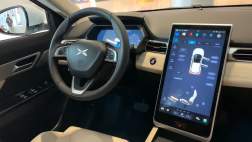Buying a used Tesla is an alluring concept. Why wouldn’t it be? You get to look cool without forking out big bucks.
But should you? Because unlike regular cars that usually last for years and years on end, Tesla’s batteries (and all electric cars, duh) degrade over time. And they’re supposedly pretty expensive to replace, too.
So how quickly do they degrade?
As revealed by a huge Google Docs file that houses the charging data of more than 1000 privately-owned Teslas, almost all of Tesla’s cars feature a battery degradation rate of less than 10 per cent.
The chart – created for the sole reason of "meh, why not?" – also provides information on the model, variant, mileage, charging behaviour, and a range of other specifics on each of the Teslas posted.
The Teslas range from anything: from basic Model S 60s to high-performance based models, like the Model X P95D.
As shown by the data, most batteries will lose around 5 per cent of their capacity before they pass the 80,000 kilometre mark. After that point, the rate of degradation evens off to a flatter rate.
One of the cars, a 2013 Model S P85, still manages to do 89.8 per cent of its original range, despite having more than 276,500 kilometres on its original battery. However, that owner did take the care to charge it fully every day.
It’s pretty impressive, especially when you consider that the battery of a 30kWh Nissan Leaf is expected to lose around 15 per cent efficiency after two years. Sheesh...
Does this have an effect on your perceptions of a used Tesla? Tell us in the comments below.













.jpg)